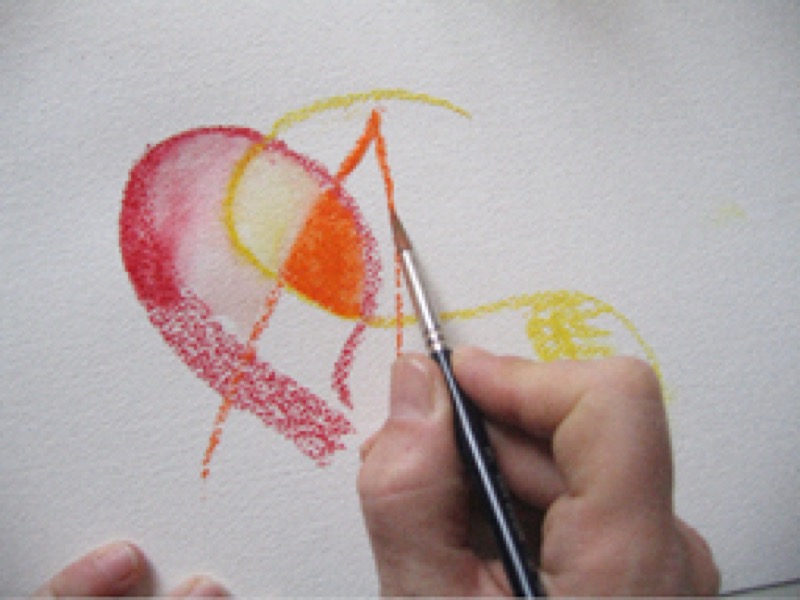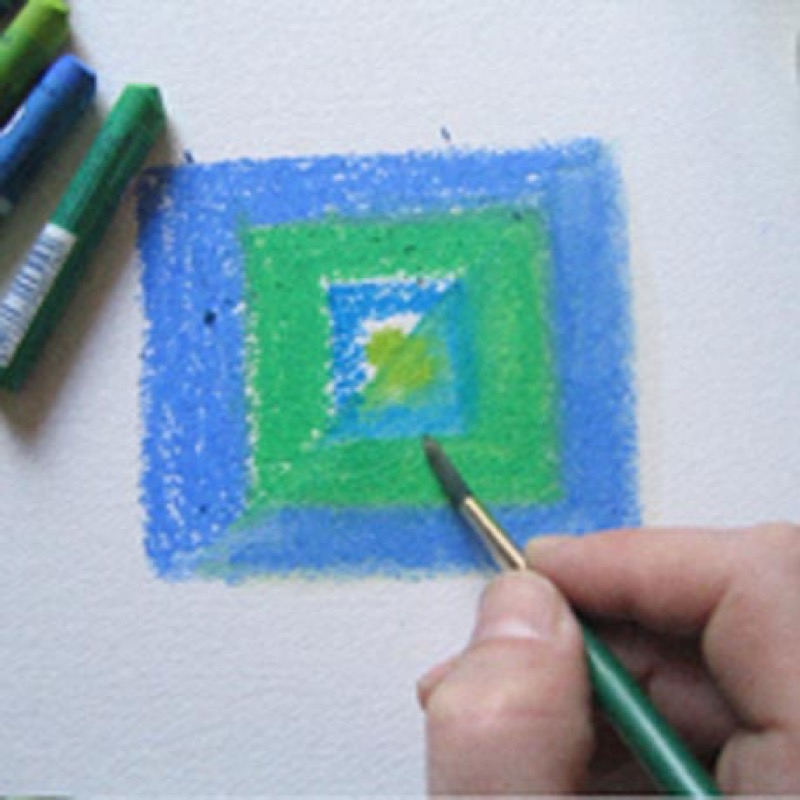In the presence of moisture, pastels become pasty. When you moisten them more, you can use them as light washes.
What you need to know
Watercoloring, that is, using a wet paintbrush to paint with dry pastels in the style of watercolors, spreads and softens colors while keeping the lines strong.
Moistening a surface done in oil pastels with white spirit or turpentine moves color around without decreasing the tone.


